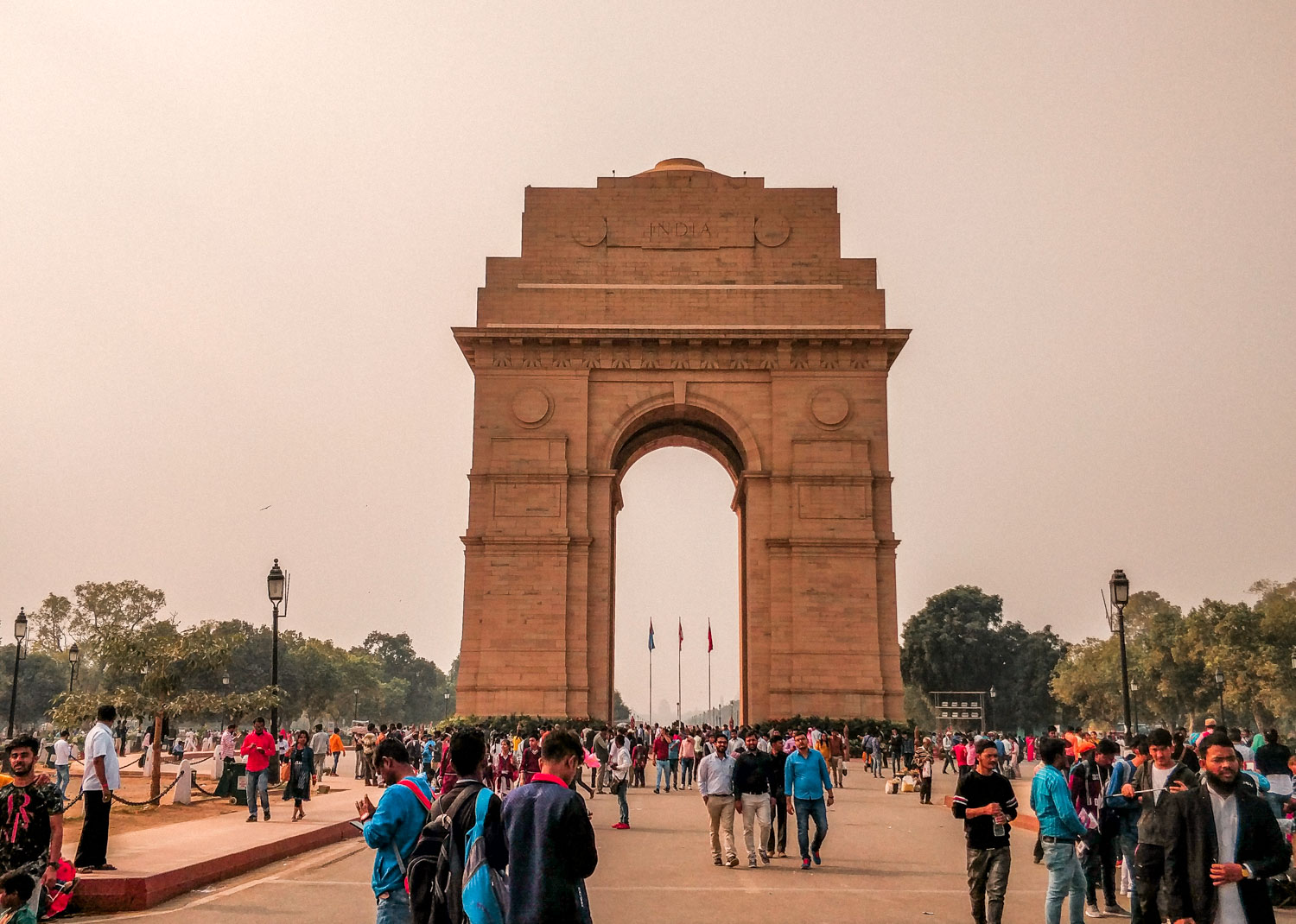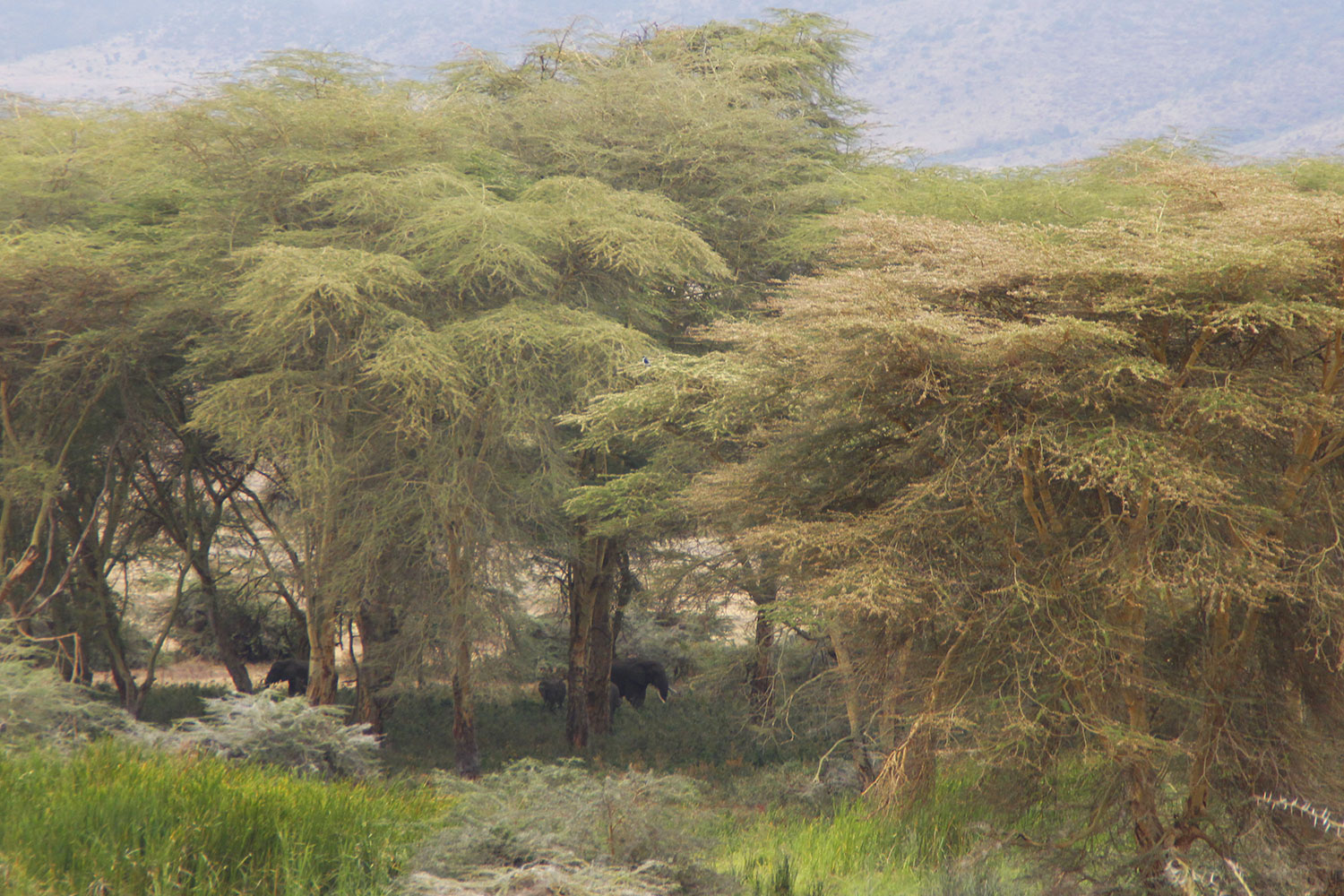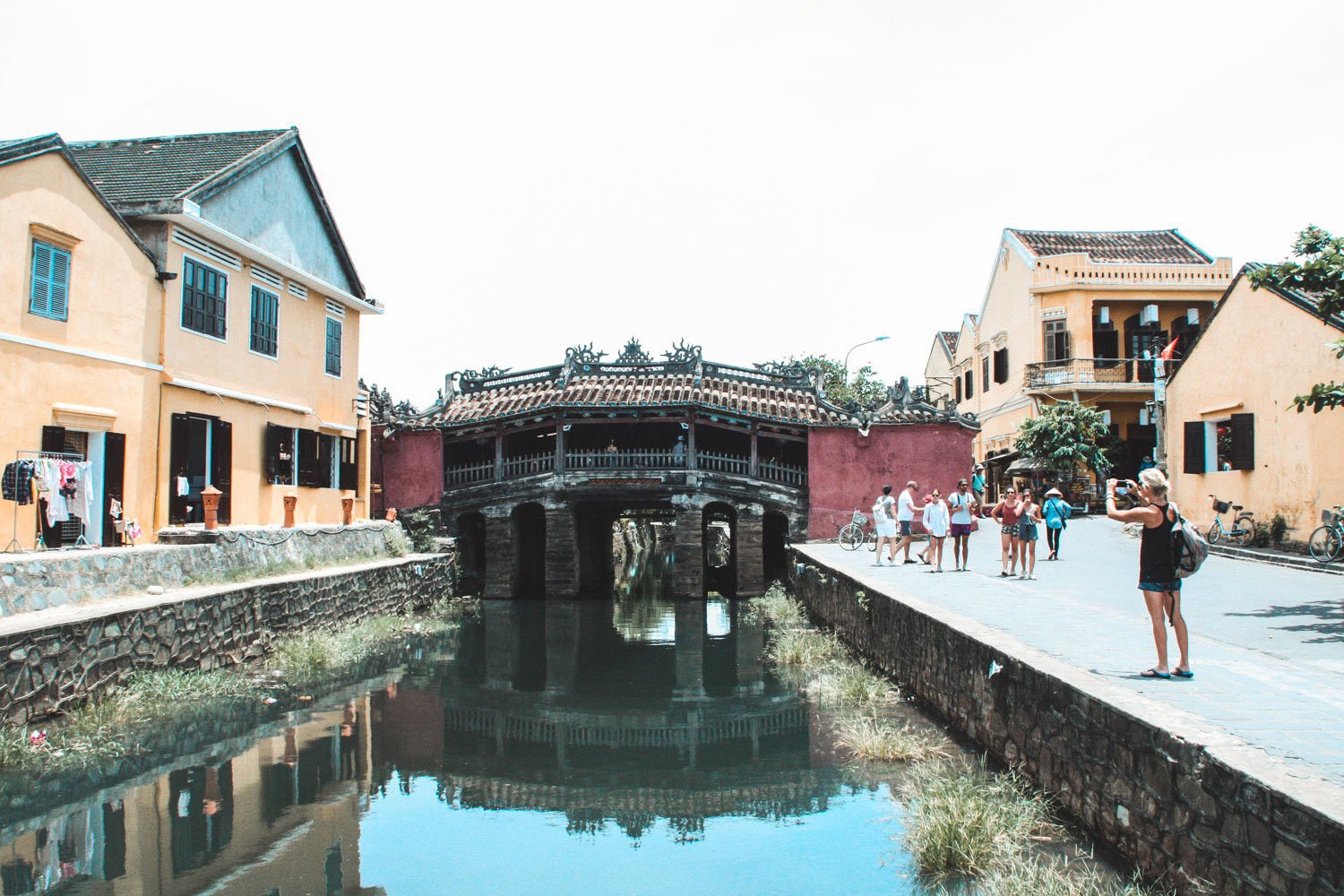Delhi zu Fuß
Wenn ich sage Delhi zu Fuß, meine ich eigentlich eine Kombination aus Metro fahren und Spazieren. Denn Delhi ist schlichtweg zu groß, um wirklich alles zu Fuß zu machen und im Gegensatz zu Rom liegen in Delhi nicht alle Sehenswürdigkeiten dicht gedrängt nebeneinander.
Vorab: U-Bahn fahren in Delhi
Metro fahren in Delhi ist nicht nur einfach, sondern auch komfortabel und bequem. Für Frauen ist sogar der erste Wagon immer reserviert, wodurch man sich nicht zwischen die Menschenmassen quetschen muss.

Wer es einfach möchte und plant viel zu fahren, der kann sich für 150 Rupie eine Touristen-Tageskarte zulegen oder eine eigene Metrocard aufladen. Für unsere Strecke hat es sich aber nicht gelohnt, deswegen haben wir zu Einzelfahrten mit Tokens gegriffen. Eine Fahrt kostet zwischen 10 und 40 Rupie, je nach Strecke.
Die Automaten sind relativ leicht verständlich. Man wählt English – Token – Namen der Ziel-Haltestelle (je nach Automaten durch Eintippen oder Auswahl auf der Karte) und Anzahl der Fahrkarten aus. Gezahlt wird mit 10er, 20er oder 50er Scheinen. Wer kein Kleingeld hat, der kann es bei einen der Angestellten, die sich in jedem U-Bahn-Hof in der Nähe der Automaten finden, wechseln. Sollte man Probleme haben, stehen sie einem jederzeit zur Seite.
Hat man seinen kleinen Coin, geht man erst durch den Security Check (Alibi–Taschenscan und Körperkontrolle) und legt schließlich bei der Schleuse den Coin kurz auf. Beim Verlassen der U-Bahn wirft man den Coin in die Schleuse ein und die Fahrt ist abgeschlossen. Easy.

Delhi zu Fuß
Lotustempel
Starten wir beim malerischen Lotustempel. An der Kreuzung der blauen und pinken U-Bahn-Linie, Kalkaji Mandir, gelegen, ist er relativ leicht zu erreichen. Nach einem kurzen Fußweg erreicht man das Gate. Zur groben Orientierung empfiehlt sich eine Offline-Karte auf dem Handy, notfalls kommt man aber auch mit der spärlichen Beschilderung und Nachfragen hin. Achtung: montags haben viele Sehenswürdigkeiten in Delhi zu, unter anderem auch der Lotus Tempel.
Khan Market
Mit der blauen Linie geht es dann zum Khan Market und zur gleichnamigen U-Bahn-Station. Der Khan Market ist relativ ruhig und kein klassischer, orientalischer Markt. Es ist vielmehr ein Freiluft-Einkaufszentrum mit internationalen Marken und kleinen Shops und bietet ein bisschen Ruhe und Entspannung. Und Möglichkeiten zum Shoppen, Essen und Kaffee trinken (Achtung Starbucks Wifi geht nur mit indischer Nummer).

India Gate
Südlich vom Khan Market gelegen, befinden sich die Lodi-Gärten, die man ca. nach 30 Minuten erreicht. Nördlich liegt das berühmte India Gate. Ihr erreicht es nach ca. 20 Minuten Fußweg. Hier herrscht jede Menge Trubel, stellt euch also auf Schulklassen, Verkäufer und die häufige Frage „Selfie please?“ ein.

Presidential House
Wer möchte kann vom India Gate zum Presidential House laufen. Man kann es schon in einiger Entfernung erkennen. Alternativ kann man sich natürlich auch in ein Tuk-tuk schwingen, aber wie es immer so ist, an den klassischen Touristen-Orten, sind die Preise hier unnatürlich hoch. Das gilt im Übrigen auch für nahegelegene Restaurants. Deswegen empfehle ich einfach zurück zum Khan Market zu gehen und dort Mittag zu essen.
Red Fort und Old Delhi
Und anschließend mit der Metro in den Norden zum Roten Fort zu fahren. Das montags übrigens auch geschlossen hat. Die Station heißt Lal Quila. Direkt am Ausgang der U-Bahn wird man von vielen Tuk-tuk Fahrern abgefangen, die einem Touren andrehen wollen. Wer sich nach rechts wendet, findet Old Delhi. Und hier scheiden sich die Geister. Lasst mich das kurz erläutern.

Old Delhi
Neu-Delhi selbst ist laut, busy und voll. Old Delhi ist es auch x1000. In den engen Gassen drängen sich Verkäufer, Obdachlose, Passanten und was sonst noch kreucht und fleucht. Frauen und Kinder sieht man hier kaum. Die Massen, Eindrücke und Gerüche überrollen einen wie ein Tsunami.
Während alle männlichen Mitreisenden meinten „Joa, muss man schon mal gesehen haben und ist lustig mal durchzulaufen“, war es für mich und meine weibliche Begleitung eher ein Durchhetzen und „Schnell raus hier“. Unfreiwilliger Po-Betastung inklusive. Als weiße Frauen sind wir wie Leuchtraketen herausgestochen. Auch wenn ich mich nie wirklich in Gefahr gefühlt habe, von angenehm und „lustig mal durchzulaufen“ war es auf jeden Fall weit entfernt. Und dabei haben wir die Hauptstraße noch nicht mal verlassen.
Ich weiß nicht, ob wir einen schlechten Tag erwischt hatten, denn ich habe auch auf einem Blog einer Frau gelesen, dass Old Delhi sehenswert ist, aber ich persönlich hatte leider keine allzu berauschende Erfahrung hier gemacht. Da sich die U-Bahn-Station Chandni Chowk, welche direkt zu unserem Hostel führte, jedoch hier befand, war es ein Übel, welches wir wohl mitnehmen mussten. Es bleibt euch selbst übrig zu entscheiden, ob ihr diese Erfahrung machen wollt.

Das war meine Route für Delhi zu Fuß. Die wichtigsten Sehenswürdigkeiten sind damit abgeklappert. Natürlich kann man Delhi auch wirklich zu Fuß entdecken, ganz ohne U-Bahn. Aber dann ist man mindestens 5 Stunden am Stück unterwegs. Und Delhi ist auch so schon ziemlich überfordernd.
Habt ihr noch eine andere Route für Delhi zu Fuß? Dann bin ich auf eure Vorschläge gespannt!
English Version
Delhi by foot
When I say Delhi by foot, I actually mean a combination of metro ride and walking. Delhi is simply too big to really do everything by foot and in contrast to Rome, in Delhi not all sights are crowded next to each other.
First of all: subway ride in Delhi
Metro travel in Delhi is not only easy, but also comfortable and convenient. Even the first wagon is reserved for women, so you don’t have to squeeze between the crowds.
Those who want it simple and plan to drive a lot by metro can buy a tourist day ticket for 150 rupees per day or load their own Metrocard. But it wasn’t worth it for our route, that’s why we took individual rides with tokens. One trip costs between 10 and 40 rupees, depending on the route.
The machines are relatively easy to understand. One chooses English – Token – name of the destination stop (depending on the machines by typing or selecting on the map) and number of tickets. Payment is made with 10, 20 or 50 bills. If you don’t have any change, you can change it at one of the employees who can be found in every subway station near the machines. They are also by your side, of you have any problems.
If you have your small coin, you first go through the security check (alibi pocket scan and body check) and finally hang up the coin at the lock. When leaving the subway, the coin is thrown into the lock and the journey is completed. Easy.
Delhi by foot
Lotus temple
Let’s start at the picturesque Lotus Temple. Located at the intersection of the blue and pink subway line, Kalkaji Mandir, it is relatively easy to reach. After a short walk you reach the gate. For a rough orientation we recommend an offline map on your mobile phone, but if necessary you can also get there with the sparse signs and inquiries. Attention: on Mondays, many sights in Delhi are closed, among others also the Lotus Temple.
Khan Market
The blue line takes you to Khan Market and the subway station of the same name. The Khan Market is relatively quiet and not a classic oriental market. It is rather an open-air shopping centre with international brands and small shops and offers a bit of peace and relaxation. And there are opportunities for shopping, eating and drinking coffee (Attention Starbucks Wifi only works with Indian number).
India Gate
South of the Khan Market are the Lodi Gardens, which can be reached in about 30 minutes. To the north is the famous India Gate. You reach it after approx. 20 minutes by foot. There is a lot of hustle and bustle here, so be prepared for school classes, salesmen and the frequent question „Selfie please?
Presidential House
Whoever wants can walk from India Gate to Presidential House. You can see it from a distance. Alternatively you can swing into a tuk-tuk, but as always, at the classic tourist places, the prices here are unnaturally high. By the way, this is also true for the nearby restaurants. Therefore, I recommend to simply go back to the Khan Market and have lunch there.
Red Fort and Old Delhi
And then to take the metro north to the Red Fort. Which, by the way, is also closed on Mondays. The station is called Lal Quila. Directly at the exit of the subway, one is intercepted by many Tuk-tuk drivers who want to take you on a tour. Those who turn to the right will find Old Delhi. And here the spirits divide. Let me explain this briefly.
Old Delhi
New Delhi itself is loud, busy and full. Old Delhi it is also x1000. In the narrow alleys salesmen, homeless people, passers-by and whatever else creeps around. Women and children can hardly be seen here. The masses, impressions and smells roll over you like a tsunami.
While all male fellow travelers said „Yeah, you have to have seen it and it’s funny to walk through it“, for me and my female companion it was rather a rush and „Get out of here fast“. Involuntary bottom touching included. As white women we are like flares. Even though I have never really felt in danger of going through „pleasant and funny times“ it was still far away. And we haven’t even left the main street yet.
I don’t know if we had a bad day, because I read on a woman’s blog that Old Delhi is worth seeing, but personally I didn’t have a too intoxicating experience here. Since the subway station Chandni Chowk, which led directly to our hostel, was located here, it was an evil that we had to take with us. It is up to you to decide if you want to have this experience.








5 Comments
Rajasthan Rundreise: Die beste Route | The Dorie Blog
5 Jahren ago[…] meisten werden in Delhi ankommen. Wer nicht gleich weiterreisen will, sollte sich hier 2 Tage Zeit nehmen. Einen Tag um […]
Jaipur Sehenswürdigkeiten - The Dorie - Travel Fashion Blog
6 Jahren ago[…] Rundreise auf keinen Fall auslassen. So anstrengend diese Stadt sein mag (jedoch kein Vergleich zu Delhi), für mich haben die Sehenswürdigkeiten in Jaipur zu meinen absoluten Highlights […]
Isabella
6 Jahren agoHallo meine Liebe,
was für ein wunderschöner Blpgpost. Dorthin muss ich auch unbedingt einmal im Leben:-*
Liebe Grüße aus Stuttgart
Isa
http://www.label-love.eu
Dorie
6 Jahren agoIst auf jeden Fall eine Reise wert, wenn auch nicht gerade entspannt 😀
Liebe Grüße
Tom
6 Jahren agoSehr schöne Bilder und hilfreiche Tips, besonders für Frauen.